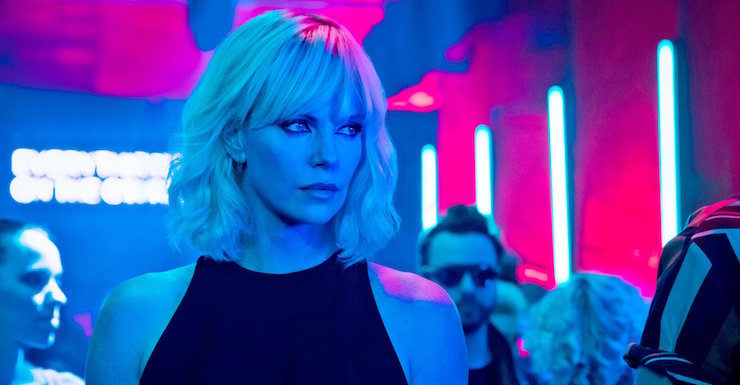Atomic Blonde, starring Charlize Theron, is an adaptation of the excellent graphic novel The Coldest City, by Antony Johnston and Sam Hart. Along with its prequel, The Coldest Winter, it’s one of the best period espionage stories you’ll read. The movie, directed by David Leitch, is stylistically very different, but both versions of the story complement one another. Atomic Blonde also provides explosive, highly entertaining proof that action movies have finally begun to evolve again. After years of the hyper-caffeinated shakycam approach pioneered by Paul Greengrass in the Bourne movies, things have begun to change. That change pretty much boils down to three steps:
- Get excellent fight choreographers and stunt drivers in.
- Train your leads to do as much, safely, as they can themselves.
- Sandbag the camera down and let them have some fun.
The fight choreography, in Leitch’s John Wick movies especially, warms the bruised knees of my black little Judoka heart and I’ve been so happy to see that style expand out to Atomic Blonde.
But of course, Atomic Blonde is only the latest outing in Theron’s quietly extensive genre career.
She’s worked in the field from her debut (Which was Children of the Corn III and…yeah) and seeing how those roles have changed and grown is an interesting metric for her rise to stardom and how genre cinema has, haltingly, begun to give better roles to women. This, like my previous spotlight on Idris Elba’s many SFF-related credits, isn’t meant to be an exhaustive list by any means—and feel free to sound off about your own favorite examples in the comments, if you have thoughts on her work in other films like Kubo and the Two Strings or the Huntsman movies—but there’s something fun in all of these movies and in the characters Theron plays (often in spite of the movies themselves).
Mary Ann Lomax (The Devil’s Advocate)
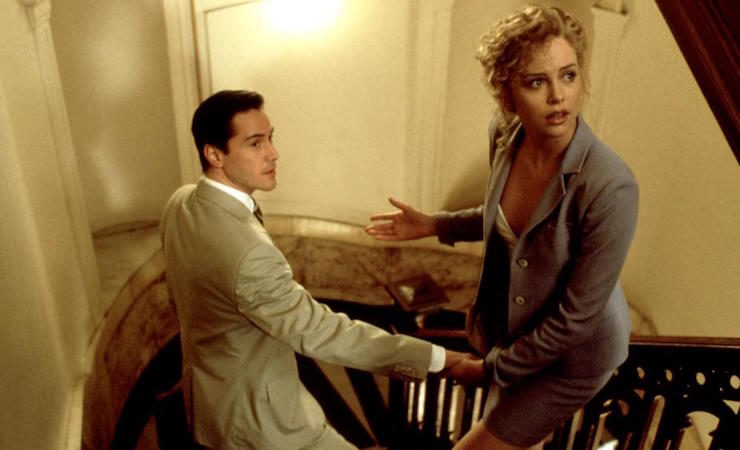
Theron has put in more than her fair share of time as “wife of star actor” in genre movies. She pulled the same duty in The Astronaut’s Wife, which is an actively terrible film that somehow manages to present the least interesting riff on Invasion of the Body Snatchers that isn’t the (also terrible) Nicole Kidman version.
The Devil’s Advocate is just as trashy but often way more fun. The movie, which follows Keanu Reeves’ morally compromised lawyer slowly realizing that he’s working for the Actual Devil, knows that it’s massively cheesy from the get-go and just gets out of its own way. Pacino chews the scenery as the Devil, Keanu Reeves hits peak earnest as the lead, and Theron’s role is basically a stick with the word “VICTIM” and a sad face drawn on it. The fact that she actually manages to be good in the role despite her non-existent character is genuinely impressive.
Aeon Flux (Aeon Flux)
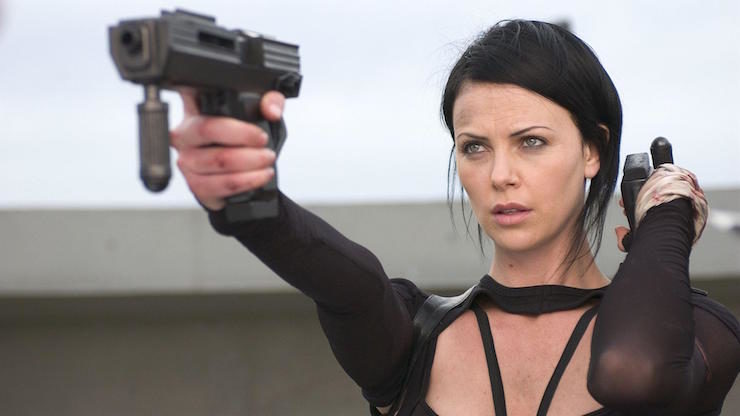
If you liked the epochal MTV cartoon that provided the basis for this adaptation, then chances are you hate this movie. If you didn’t like or never saw the cartoon, odds are you probably still hate this movie. Director Karyn Kusama certainly isn’t fond of the final product, and is on record as saying the version that was released was massively recut by the studio.
It’s a shame, too, because the film is often interesting, and on occasion pretty good. Of the spate of Aeon Flux-like movies of the time (which often seem to star Milla Jovovich), this is one of the most entertaining. Theron stars as Aeon, a member of a resistance force battling the oppressive government of a walled, post-apocalyptic city. As she wages balletic and savage war, the movie throws some glorious visuals and fun ideas at you—not all of them work, but it doesn’t look like anything else and Theron is both very good and clearly working supremely hard. The physicality of the role grounds the movie even during its rougher sections, and while it’s not great, she is.
Mary Embrey (Hancock)
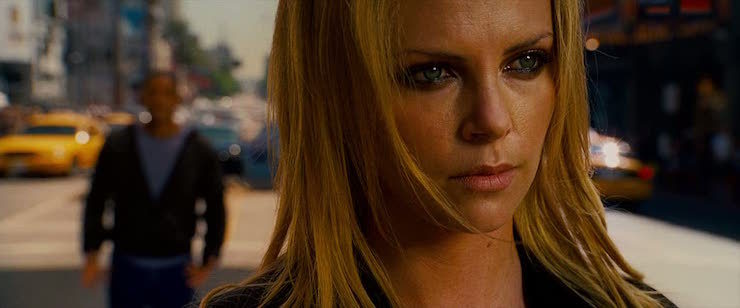
The Will Smith movie no one liked before no one liked After Earth has a pretty negative reputation. Which is a shame, as Hancock is actually an early outlier for how superhero movies would end up looking and working in the decade since its release. It also has the best second act twist of its decade. That twist, of course, makes Hancock really hard to talk about because people who’ve seen it will either love or hate that moment, while people who haven’t will have it ruined if I explain what the twist is. So let’s keep this specifically vague…
Will Smith plays an amnesiac superhuman who has no idea who he is or how long he’s been alive. He’s also a grumpy asshole, and the film follows his slow return to polite(-ish) society. This is facilitated by the eternally optimistic Ray Embrey (Jason Bateman) and Mary Embrey, his wife, played by Theron. The way the three interact, and the true nature of the characters, is massively ambitious for the time and surprisingly successful. Plus Theron is great, giving the movie a moral core around which Bateman and Smith’s respective bits of comedy shtick orbit. You may not like Hancock, but it’s at the very least an interesting failure and there remains a lot to enjoy in there.
Vague enough? Great! Let’s move on
Woman (The Road)

It’s impossible not to look at this performance as Theron deliberately subverting and building on those early, desperately underwritten roles in movies like The Devil’s Advocate. Based on the Cormac McCarthy novel, The Road follows a father and son as they make their way across a ruined, post-apocalyptic America.
Theron appears in flashbacks as the boy’s mother. It’s a smart role, expanded from the novel and used to explore the counterpoint to the father’s relentless need to live. Sliding into depression following the slow apocalypse that happens off-screen, she’s a victim—but never one entirely without agency and never without context. She’s presented with real compassion as someone just as smart and driven as her partner, but who is broken by the inconceivable horror that’s broken the world. In short, while most of us would like to think we’re the Father, Theron plays the person most of us truly would be under such extreme circumstances, and she does so with bravery, compassion, and strength.
Vickers (Prometheus)
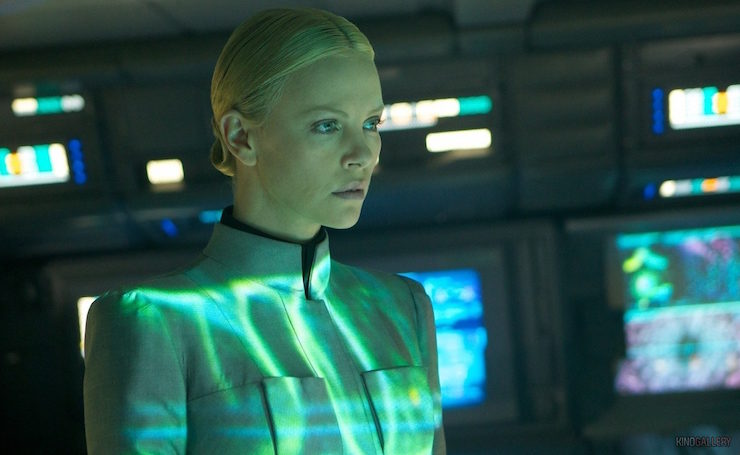
Turn left! LEF—oh, COME ON!
Vickers is one of the elements of Prometheus that neatly embodies the film’s central failures. The corporate executive in charge of the mission, she’s an interesting but sketched-in figure who clearly has a familial relationship with Peter Weyland. There’s real depth there, but it’s never explored. Instead, with the same maddening ambiguity that Prometheus applies to so many things, we’re left with vague hints. Is Vickers’ Weyland’s biological daughter? Is she the partial DNA source for David? Is she a synthetic like David? We still don’t know, at this point, and—given the direction Alien: Covenant went in—the chances of us finding out aren’t high. Which is a shame, as Theron once again did good work with a painfully thin script.
Cypher (The Fate of The Furious)
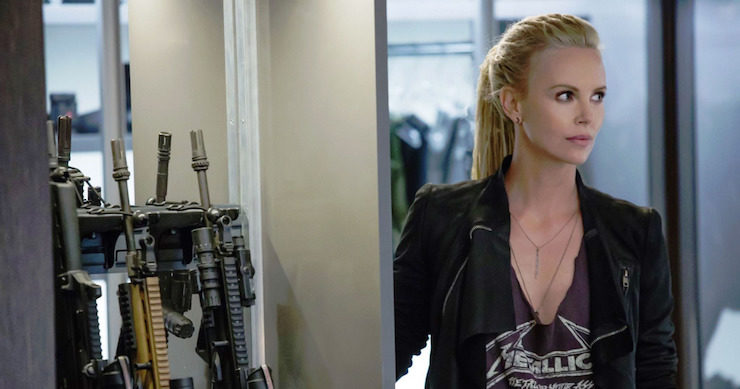
The Fast & Furious movies are surprisingly cyberpunk, and Cypher is a big part of why: a genius hacker with a global agenda, Cypher is the exact sort of sociopathic activist that Hollywood loves.
The difference this time, and what makes the character work? She LIKES what she does.
Theron is great as the absolute antithesis of Vin Diesel’s Dom Toretto. Precise, where he’s the human definition of blunt force, intellectual where he’s physical and emotional, Cypher outmaneuvers him at (almost) every turn. The fight is ultimately something of a draw, and there are rumours that she’ll be the villain in the upcoming Shaw/Hobbs “Bald Men Banter And Punch Things In Trucks” spinoff movie. We can but hope. Unless she follows the same path as Owen and Deckard Shaw and ends up joining the team…
Imperator Furiosa (Mad Max: Fury Road)
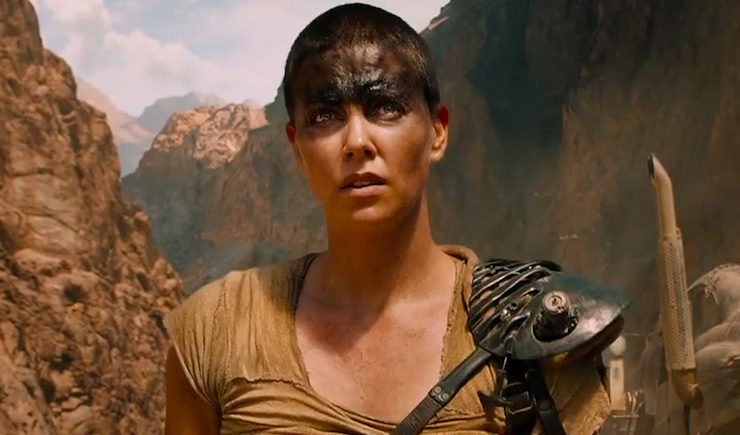
And here it is: many other writers have gone into detail about just why Furiosa is both a great character and a vitally important one. She’s an intensely considered and compelling figure, both on the page and on the screen, and the massive expansion she brings to the world of the Mad Max films is both a huge improvement and a relief.
But what really makes her work, for me, is how carefully Theron plays her. From the first moment she’s on screen, we know Furiosa has something planned. Where Max is instinctive and initially almost feral, Furiosa is endlessly thoughtful and cautious. She’s planned for very nearly every eventuality and that alone would make her intriguing.
But Theron shows us not just Furiosa’s intelligence but her emotional core. It’s a needlepoint performance but as you watch, you see regret at betraying her men, her increasingly desperate need to get home, and her colossal, soul-breaking grief at being too late. She plays like a character who has the same amount of backstory and complexity as Max—it’s present, although we haven’t seen it. She feels real, three dimensional, and fully realized, every inch Max’s physical equal and his intellectual and emotional superior. Better still, she never flaunts that superiority. Instead, she holds our attention and does what needs to be done, while creating the space Max needs to begin to heal himself, and, in doing so, helps save and change both their lives.
It’s a career-best role in an already classic movie—one that, by all accounts, was immensely hard work to make. For what it’s worth, that effort is all on the screen, and a vast amount of the movie’s success is down to Theron’s fiercely intelligent, physical performance.
Over the years, Charlize Theron has been a frequent flyer in genre movies. Those movies haven’t always been good, but she’s always been good in them. It’s all the more satisfying, then, to see Atomic Blonde be successful. Theron deserves more roles like that of Lorraine Broughton, action cinema deserves to continue evolving and expanding, and we all need more interesting, nuanced, occasionally bloody-knuckled female leads. And, given how much fun Theron is clearly having in Atomic Blonde, it looks like we’ve got plenty more to look forward to on the way…
Alasdair Stuart is a freelancer writer, RPG writer and podcaster. He owns Escape Artists, who publish the short fiction podcasts Escape Pod, Pseudopod, Podcastle, Cast of Wonders, and the magazine Mothership Zeta. He blogs enthusiastically about pop culture, cooking and exercise at Alasdairstuart.com, and tweets @AlasdairStuart.










